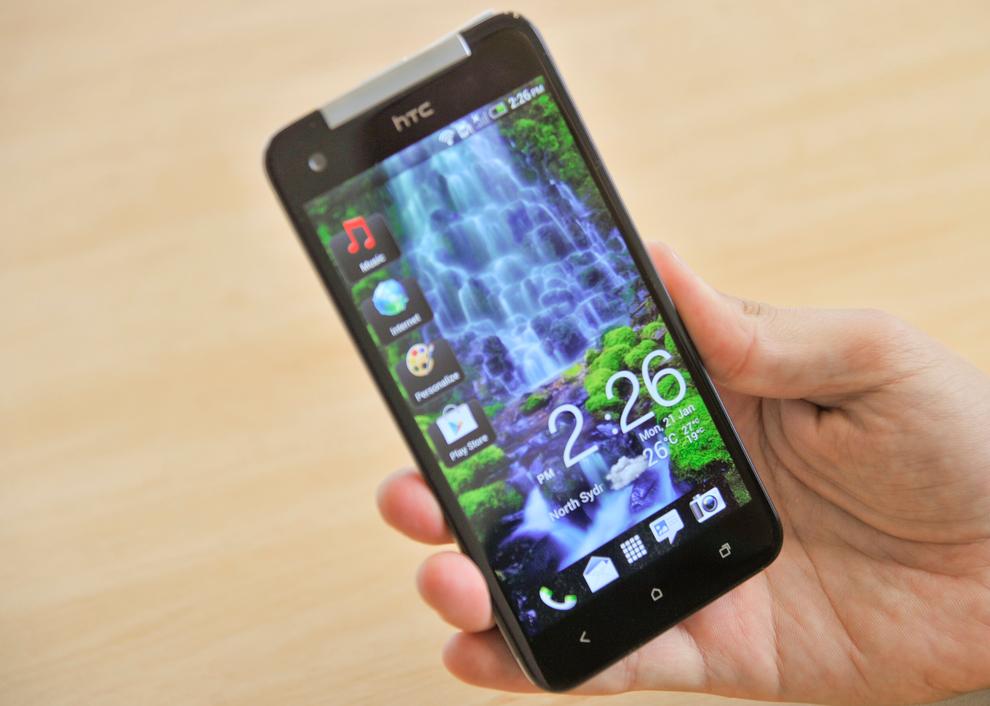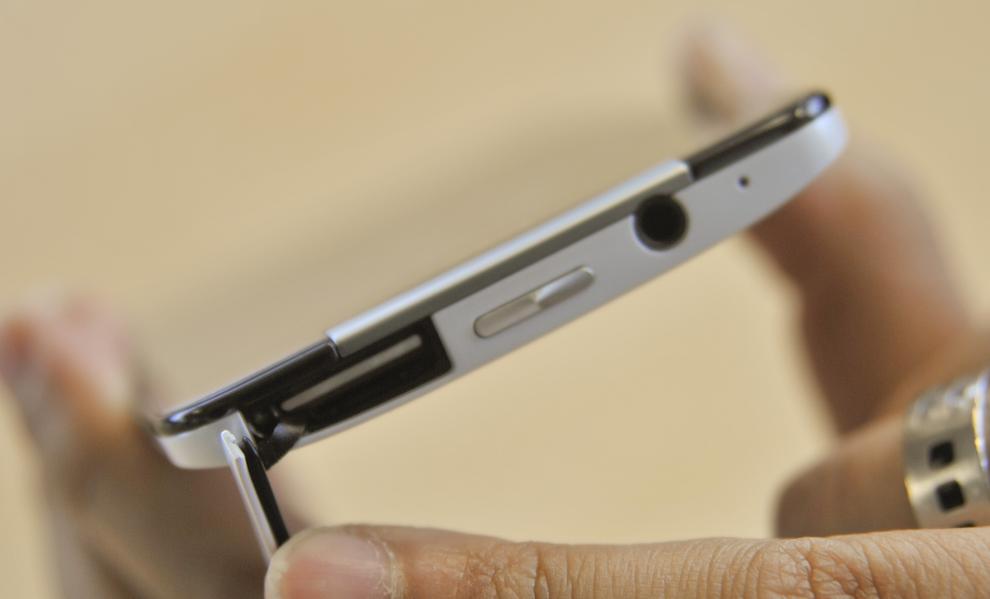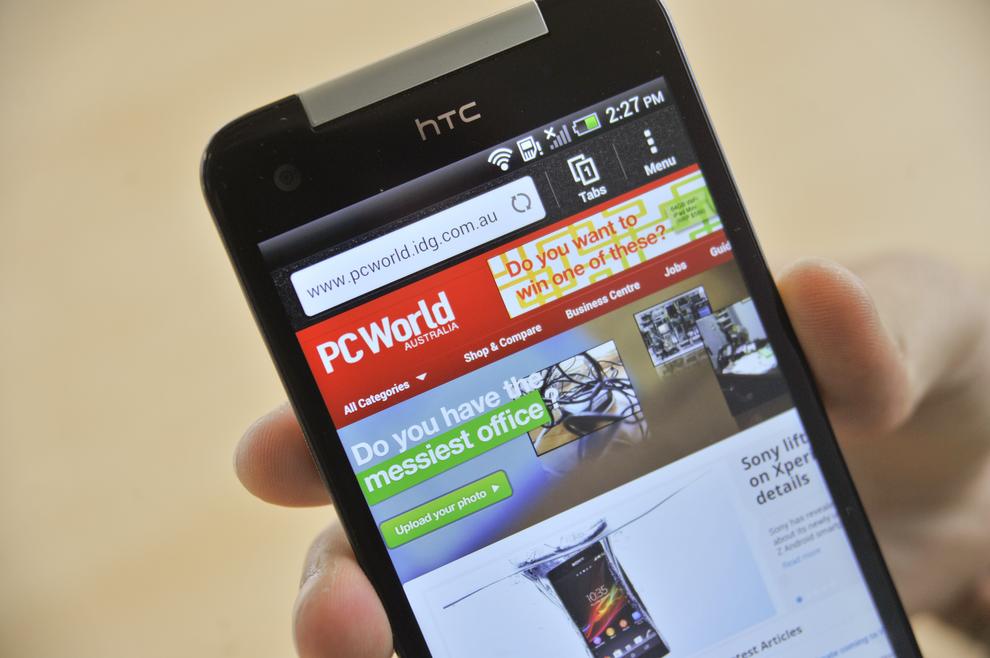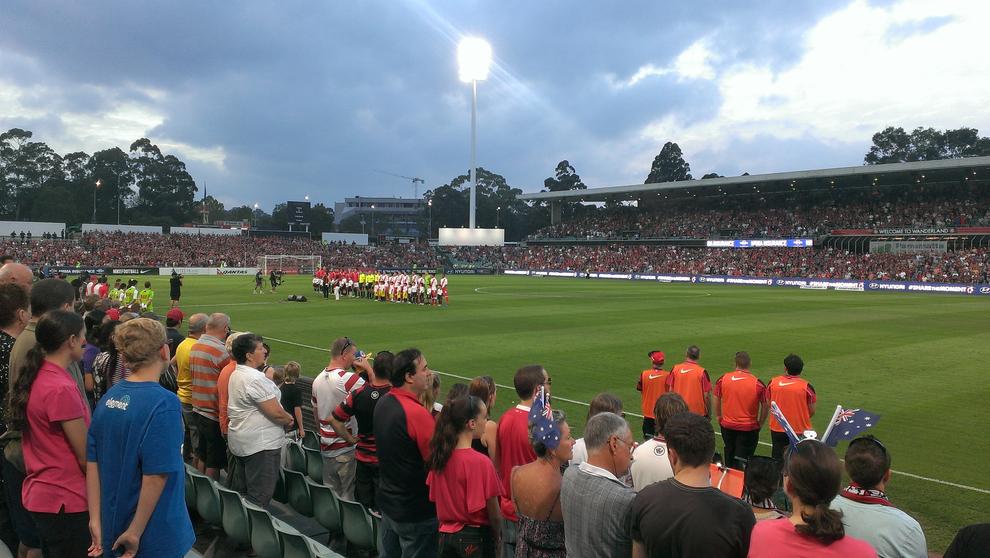
HTC Butterfly Android phone
The HTC Butterfly has a fantastic display but is let down by poor battery life
Pros
- Outstanding full HD display
- Thin, well constructed design
- Dual notification lights
Cons
- Awful battery life
- Occasional performance hiccups
- Some annoying ergonomics
Bottom Line
The HTC Butterfly's 5in, full HD screen is a marvel and its thin design quickly becomes appreciated. However, poor battery life, some odd ergonomics and HTC's tired Sense UI are all letdowns. Add a lack of 4G to that and we'd advise you give this one a miss.
-
Price
TBA (AUD)
The HTC J Butterfly was exclusively released in Japan in December last year but HTC has now unveiled an international variant of the device that works on Australian 3G networks, simply called the Butterfly. Its 5in, full HD screen is a marvel and the thin design quickly becomes appreciated, but the Butterfly suffers from poor battery life, has some odd ergonomics and is let down by HTC's tired Sense UI.
Note: The HTC Butterfly hasn't officially been released in Australia, but you can purchase it from online mobile phone store MobiCity, who supplied our review unit.
The Butterfly effect
Full HD screens are set to quickly become the norm on smartphones in 2013, but that doesn't make the feature any less impressive. The HTC Butterfly is a perfect example of this — the 5in screen has a resolution of 1920x1080, giving it a seriously impressive pixel density of 440ppi. As a comparison, Apple's iPhone 5 has a pixel density of 326ppi while the Samsung Galaxy Note II offers 267ppi.
The HTC Butterfly's display simply has to be seen to be fully appreciated.
It's not the numbers on a specification sheet that are important, however. What matters is the fact you can't distinguish any individual pixels on the SLCD 3 panel even if you spend hours trying. This is without a doubt the most impressive screen we've ever seen on a smartphone, especially when it comes to displaying text. Further, colour reproduction is excellent, viewing angles are superb and brightness is almost unrivaled. The HTC Butterfly's display simply has to be seen in the flesh to be fully appreciated.

There are only two downsides to the Butterfly's display. The ultra sharp resolution makes some images, including the icons of many Android apps, look pixelated and grainy, while it's also very power hungry. The Butterfly's screen often accounted for almost half of battery usage, so it definitely drains power faster than most other smartphones we've tested of late.
Thin design, with some compromises
The design of the HTC Butterfly makes a great first impression. The phone is constructed largely from plastic, which strays away from many of HTC's previous aluminium unibody designs. The Butterfly is a very solid feeling device and there's no evidence that HTC opting for plastic has come at a cost of build quality. As a direct comparison, we prefer the fit and finish of the Butterfly over Samsung's Galaxy Note II. Both are large devices, but the Butterfly is thinner (9mm) and lighter (140g).

There are a number of small touches that add to the Butterfly's premium feel.
There are a number of small touches that add to the Butterfly's premium feel including a metallic-like, gloss white finish on the back, thin edges that taper in from the centre of the device and what HTC calls a "micro-grill" pattern along both sides. We also love the unique, dual-notification lights. There's one on the front and the other is cleverly hidden behind the rear casing, sitting beneath a tiny, round grill. It's a feature we haven't seen on any other smartphone before and one that we quickly came to appreciate.
There are a few design elements of the Butterfly that we dislike, however. The top-mounted power/lock button is positioned in the centre, which makes it awkward to press without avoiding an awkward grip. The micro-SIM and microSD card slot is covered by a plastic flap that's ridiculously hard to pry open. The flap covering the micro-USB port at the bottom is easier to open, but given the phone isn't water or dust-resistant, we don't see the need for it. The battery isn't removable, either, and we found the Butterfly's speaker lacking in volume, even when set to its highest level.

The HTC Butterfly also lacks 4G connectivity, a big no no in 2013. This is likely to be the main reason the company hasn't officially launched this device in Australia. With Telstra and Optus 4G networks already up and running and Vodafone preparing its 4G network to launch in the first half of this year, Australian carriers simply aren't interested in flagship devices that lack 4G.
Sense or senseless?
The HTC Butterfly runs the 4.1 Jelly Bean version of Google's Android operating system. Like most of HTC's smartphones it's skinned with HTC's Sense UI, an overlay over the top of the standard Android interface. Whether you like the interface or not will ultimately be a personal preference, but we feel the company often makes changes for changes sake. The default keyboard and the multitasking menu, for example, are two examples where Android's default options are both better implemented and more effective than HTC Sense.

We often felt that scrolling in some apps isn't as smooth as expected.
We do like many of HTC's Sense widgets, however, and there's a few nice touches throughout the OS that you won't find on any other Android phones. Asking whether you'd like to save an incoming phone number as a new contact, a convenient four dock icon shortcut on the lock screen and the ability to sort the app draw by frequent or downloads are all appreciated features.
The HTC Butterfly offers reasonably impressive performance thanks to its 2GB of RAM and 1.5GHz quad-core processor, but there are times when the interface appears to be lagging. We certainly wouldn't describe the phone as slow, but we often felt that scrolling in some apps isn't as smooth as expected from a top end device in 2013. This was particularly noticeable when using the Twitter and Google Chrome apps, for example.

Excellent camera interface, poor battery life
The HTC Butterfly has an 8-megapixel rear-facing camera and a front-facing 2.1-megapixel camera for video calls. The camera app interface is one of the best we've used on a smartphone and is a slight variation of what the company first introduced on last year's One range.
Features include the ability to hold your finger on the on-screen shutter button to enable burst mode (up to 99 photos), being able to capturing still shots while recording uninterrupted video and the ability to add a range of real time effects including distortion, vignette, depth of field and sepia. We also love the fact there's no need to switch from video to photo mode, or vice versa. Simply press the video button to immediately begin recording.

The Butterfly's battery often lasted less than nine hours on a regular day of use.
The quality of images captured by the HTC Butterfly are relatively impressive, but not among the best we've seen. Most images are well focussed and relatively sharp, but low light performance is poor and colours often appeared washed out. Like most camera phones, images tend to lack detail when zoomed in and possess a fair bit of noise. Video recording quality is excellent, though autofocus can be slightly erratic with movement.
The HTC Butterfly's biggest issue is poor battery life. We couldn't manage remotely close to a full day of use before needing a recharge. In fact, the Butterfly often lasted less than nine hours on a regular day of use. We managed 10 hours of use on one occasion, but this was with minimal use. If you buy this phone, be warned that you'll need a charger almost everywhere you go.
Related content
• Hands-on with the HTC Butterfly
• HTC Droid DNA review: A superphone with flaws
• HTC One X review
• HTC One XL review
• HTC One S review
• HTC One V review
Brand Post

Most Popular Reviews
- 1 Dell U3223QE review: A winning debut for an IPS Black monitor
- 2 HP Spectre x360 16 review: The right 2-in-1 at the wrong time
- 3 Acer K242HYL review: An affordable monitor for any occasion
- 4 GeForce Now review: You bring the games, Nvidia streams the hardware
- 5 Asus ProArt PA279CV monitor review: The go-to for content creators on a budget
Latest News Articles
- Bizarre iOS bug swaps out Spotify for Apple Music in the iPhone dock
- Fortnite returns to the iPhone (sort of) courtesy Xbox Cloud Gaming
- Want to go watch the WWDC keynote at Apple Park? Here’s how to apply
- iPad buying guide 2022
- Apple to support ‘passwordless’ iPhone logins on Android phones and PCs
Resources
Macworld
What's new, plus best mac-related tips
and tricks

Business Centre
The latest business news, reviews, features and whitepapers

Videos
Watch our video news and reviews from around the world

Guides
Comprehensive buying guides, features, and step-by-step articles

PCW Evaluation Team
Pedro Peixoto
Aruba Instant On AP11D

Set up is effortless.
Cate Bacon
Aruba Instant On AP11D

The strength of the Aruba Instant On AP11D is that the design and feature set support the modern, flexible, and mobile way of working.
Dr Prabigya Shiwakoti
Aruba Instant On AP11D

Aruba backs the AP11D up with a two-year warranty and 24/7 phone support.
Tom Pope
Dynabook Portégé X30L-G

Ultimately this laptop has achieved everything I would hope for in a laptop for work, while fitting that into a form factor and weight that is remarkable.
Tom Sellers
MSI P65

This smart laptop was enjoyable to use and great to work on – creating content was super simple.
Lolita Wang
MSI GT76

It really doesn’t get more “gaming laptop” than this.
Featured Content
- Which Lenovo Laptop Should I Buy?
- Every TV in Samsung's 2022 line-up: OLED, Neo QLED and more!
- Top 10 best Android and Apple phones for under $600
- Everything you need to know about Smart TVs
- What's the difference between an Intel Core i3, i5 and i7?
- Laser vs. inkjet printers: which is better?










